Difference between revisions of "Zebu leather"
m |
|||
| Line 10: | Line 10: | ||
==Zebu leather - Zebu hides== | ==Zebu leather - Zebu hides== | ||
| − | + | Zebus are domesticated cattle, which is mainly kept in the tropical and subtropical climate. Originally from the Indian subcontinent, they are now also widely spread in [https://www.youtube.com/watch?v=LDmkdFwqTt8&list=PLE1C68DCF3DA8680D Brazil] and many other tropical and subtropical regions. | |
| − | Due to the hunchback in the neck, the skins of Zebus have a disadvantage. Since the hunchback cannot be flattened in the [[tannery]], it would get stuck in a lot of the tannery machines. Therefore, the hump is cut off and roughly sutured so that the skin does not tear in this area during the [[leather production|working | + | Due to the hunchback in the neck, the skins of Zebus have a disadvantage. Since the hunchback cannot be flattened in the [[tannery]], it would get stuck in a lot of the tannery machines. Therefore, the hump is cut off and roughly sutured so that the skin does not tear in this area during the [[leather production|working stages]] in the [[tannery]]. Thus, zebu skins have a longer rip in the skin, which leads to a higher [[leather cutting waste]]. This rip is also called "hump hole". |
| Line 20: | Line 20: | ||
</p> | </p> | ||
<p align=center> | <p align=center> | ||
| − | ''Characteristic neck cut of a 5.65 [[Measures and weights|square | + | ''Characteristic neck cut of a 5.65 [[Measures and weights|square metre]] zebu skin from the [[tannery]] Mastrotto in [https://www.youtube.com/watch?v=LDmkdFwqTt8&list=PLE1C68DCF3DA8680D Brazil].'' |
</p> | </p> | ||
| Line 31: | Line 31: | ||
</p> | </p> | ||
<p align=center> | <p align=center> | ||
| − | ''Zebu cattle with | + | ''Zebu cattle with its distinctive neck in [https://www.youtube.com/watch?v=LDmkdFwqTt8&list=PLE1C68DCF3DA8680D Brazil].'' |
</p> | </p> | ||
| Line 41: | Line 41: | ||
<br> | <br> | ||
<p align=center> | <p align=center> | ||
| − | <flashow> | + | <flashow>//www.youtube.com/v/JjPr6dqvKDc&fs=1&color1=0x660000&color2=0x550000&border=1|width=500|height=281,25</flashow> |
</p> | </p> | ||
<p align=center> | <p align=center> | ||
Revision as of 08:52, 28 April 2017
Zebu leather - Zebu hides
Zebus are domesticated cattle, which is mainly kept in the tropical and subtropical climate. Originally from the Indian subcontinent, they are now also widely spread in Brazil and many other tropical and subtropical regions.
Due to the hunchback in the neck, the skins of Zebus have a disadvantage. Since the hunchback cannot be flattened in the tannery, it would get stuck in a lot of the tannery machines. Therefore, the hump is cut off and roughly sutured so that the skin does not tear in this area during the working stages in the tannery. Thus, zebu skins have a longer rip in the skin, which leads to a higher leather cutting waste. This rip is also called "hump hole".
Characteristic neck cut of a 5.65 square metre zebu skin from the tannery Mastrotto in Brazil.
Zebu cattle with its distinctive neck in Brazil.
Video about leather of different animal species
Leather of different animal species - Exotic leather
Additional information







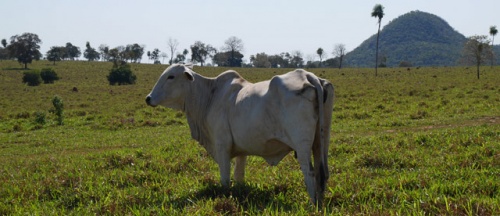
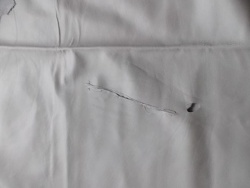
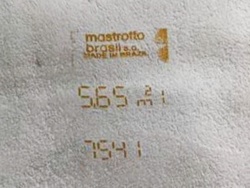
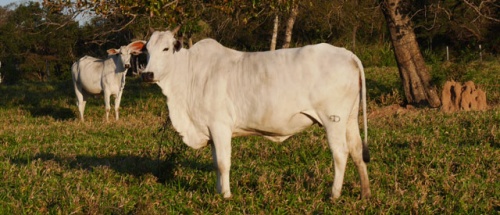
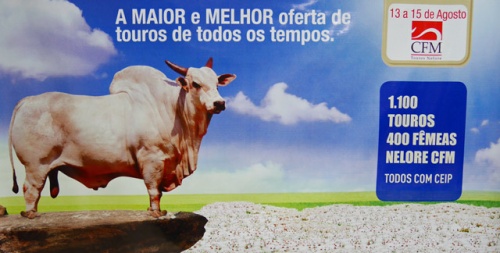

 a kotori web solution
a kotori web solution